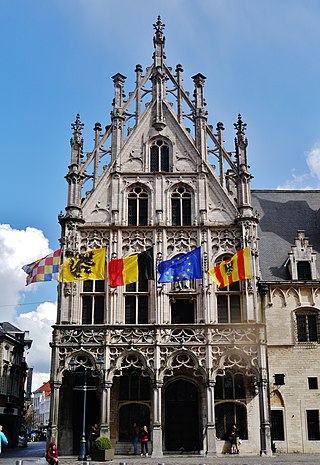
The Argentine Confederation was the last predecessor state of modern Argentina; its name is still one of the official names of the country according to the Argentine Constitution, Article 35. It was the name of the country from 1831 to 1852, when the provinces were organized as a confederation without a head of state. The governor of Buenos Aires Province managed foreign relations during this time. Under his rule, the Argentine Confederation engaged in conflicts with Brazil, Bolivia, Uruguay, France and the United Kingdom, as well as other Argentine factions during the Argentine Civil Wars.

Carlos María de Alvear, was an Argentine soldier and statesman, Supreme Director of the United Provinces of the Río de la Plata in 1815.

The Viceroyalty of the Río de la Plata meaning "River of the Silver", also called the "Viceroyalty of River Plate" in some scholarly writings, in southern South America, was the last to be organized and also the shortest-lived of one of the viceroyalties of the Spanish Empire in the Americas. The name "Provincias del Río de la Plata" was formally adopted in 1810 during the Cortes of Cádiz to designate the Viceroyalty of the Río de la Plata.
There are a number of stadiums and venues known under the name of Estadio Monumental in different Spanish- and Portuguese-speaking countries:

Carmen de Patagones is the southernmost city in the province of Buenos Aires, Argentina.

The Cisplatine War was an armed conflict fought in the 1820s between the Empire of Brazil and the United Provinces of the Río de la Plata over control of Brazil's Cisplatina province. It was fought in the aftermath of the United Provinces' and Brazil's independence from Spain and Portugal, respectively, and resulted in the independence of Cisplatina as the Oriental Republic of Uruguay.
River Plate may refer to:
Luján or Luxan, a common Spanish surname and given name, may refer to:
Fatima, who died in either 632 or 615–633, was the daughter of Islamic prophet Muhammad and is revered by Muslims.

A cultural center or cultural centre is an organization, building or complex that promotes culture and arts. Cultural centers can be neighborhood community arts organizations, private facilities, government-sponsored, or activist-run.

The Istituto Italiano di Cultura, the Italian Cultural Institute in English, is a worldwide non-profit organization created by the Italian government. It promotes Italian culture and is involved in the teaching of the Italian language. The creation of the institute was in response to the desire for a deeper understanding of Italian culture throughout many continents. By organising cultural activities it supports the work carried out by the Italian Embassies and Consulates. There are 85 Italian Cultural Institutes throughout major cities around the world.

The Inca plan was a proposal formulated in 1816 by Manuel Belgrano to the Congress of Tucumán, aiming to crown a Sapa Inca to lead the independent territory. After the Declaration of Independence of the United Provinces of South America, the Congress discussed the form of government that should be used. Belgrano proposed that the country be ruled by a Constitutional monarchy headed by a restored Inca ruler. The proposal was supported by José de San Martín, Martín Miguel de Güemes and the northern provinces, but found strong resistance from Buenos Aires. The Congress would ultimately reject it, creating instead a Republican government.
Atlético, Spanish for athletics, or Athletico in English, may refer to:

The dissolution of the Viceroyalty of the Río de la Plata meant the breakup of the Spanish colony in South America and the creation of new independent countries. Most of the territory of the Spanish viceroyalty is now part of Argentina, and other regions belong to Bolivia, Brazil, Paraguay and Uruguay.

The description Paris of the West or in some cases Paris of America has been applied to a number of locations, including:
Avenida Brasil may refer to:

The list of city flags lists the flags of cities. Most of the city flags are based on the coat of arms or emblems of its city itself, and city flags can be also used by the coat of arms and emblems on its flag. Most of the city flags are flown outside town halls and councils.















